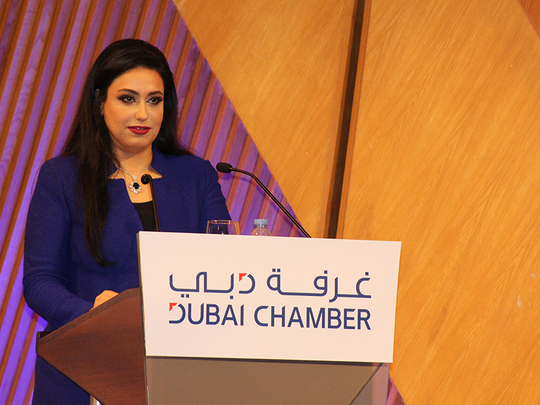
DUBAI: Growing digitisation is likely to spell the end of print newspapers in the UAE by 2027, Dr Nashwa Al Ruwaini told delegates at Dubai Chamber’s National Treasure conference on Tuesday.
Dr Al Ruwaini, founder of Pyramedia Consultancy & Production, said print would continue in some form, but the medium was increasingly ill-equipped to provide news because of their once-a-day delivery.
Instead, she the rise of smartphones indicated a growing role for social media and a democratisation of news provision. There are 5.9 billion smartphones in the world today, she said, and 1.3 billion Facebook users
“The millennials are crazy about them, and the millennials are the future,” she told delegates and business students at the conference, pointing out that millennials formed the largest segment of the Arab population.
This applied not only to consumers, but to content providers “No more monopolies,” she said. “No more satellite, no more cable, no more print, no more millions to be paid for you to get a message across. You need a mobile [phone] and you need the internet.”
While TV, radio and magazines in the Arab region had maintained their share of advertising spend in between 2009 and 2015, digital spend had grown from 1 per cent to 10 per cent of the total advertising spend in the region during that period at the expense of newspapers, whose share dropped from 39 per cent to 31 per cent.
That’s still the second largest share, behind TV’s 40 per cent, but Dr Al Ruwaini said print newspapers would be extinct in the Middle East and North Africa by 2037, fading from the UAE and Saudi Arabia earlier, in 2027 and 2033 respectively.
“The daily frequency cannot compete with online newspapers and 24-hour news channels. It cannot,” she said.
“Some newspapers have capitalised on their own business and launched online versions of their own newspapers so they counter this 24-hour news input. Some people are moving towards online advertising, but online advertising costs less than print, so it doesn’t make up for the loss.”
And although pay TV subscriptions rose in the Arab region, from 1.93 million subscriptions in 2006 to 3.53 million in 2011, according to figures she displayed from the Arab Media Outlook 2011, she also showed the impact of online services such as Apple TV, Netflix and Hulu in the US, with a steady loss of traditional subscriptions through 2014 and 2015.
But although smartphones were increasingly used to access news, as well as being communications and leisure devices, she warned against planning media strategy around the technological means of delivery, pointing out that wearables such as smart glasses and smart watches had not taken off.
“Technology can be misleading for predictions,” she said. “But there is one on which I would like to make my bet on regarding the future of media, and this is messaging apps. The top four applications have almost 3 billion users. Messaging is at the heart of the mobile experience and humans are emotionally and physically attached to their phones.”
She closed her presentation on a note of caution, pointing out that the growth in information was not the same as growth in knowledge.












